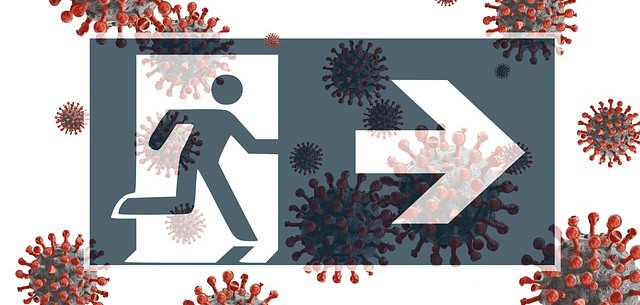
This blog post reports on progress made in modeling exit strategies in Belgium by Dr. Bhattacharya and colleagues
At this time, various governments are planning the next phases to approach the Corona crisis. The so-called exit strategies have profound implications on how society and the economy will recover while keeping risks of a rebound and that of unnecessary deaths at a minimum. We use widely available data from a variety of sources in order to come up with epidemiological models to arrive at the impact of interventions. A simple example would be to see how the wearing of masks might impact an exit to ‘normality’.
The project itself uses Belgian data but is international in scope and we encourage the use of the simulator with Dutch data (or data from other countries). The simulator is built in Excel and is quite simple to use with concrete instructions provided; see here for an overview.
We use a SEIR-type model for our purposes, as shown below.
Without going into technical details, the model is a deterministic simulator apt for:
- Predicting / simulating number of reported cases, real infections, hospitalizations, ICU, ventilated, death
- Allows simulating up to 50 government measures to determine best strategies
- Monitoring the situation and be in time to react if health care capacity risks to get overwhelmed
Using this model, we have generated an initial assessment of possible exit strategies for Belgium, as shown in the table below.
| Intervention type | Day end of lockdown | Covid related direct death | Covid unrelated death due to strain on system | Impact lockdown on society | Remarks |
| A. Continue and trace | December 1st | 14,000 | 10,000 | Long pain | |
| B. Crush curve now and trace | June 10th | 8,600 | 6,000 | Middle pain | |
| C. Extreme lockdown crush and trace | May 20th | 9,000 | 6,000 | Short pain | Relies heavily on assumption that mainly contagious in the first week |
| D. Keep curve under ICU | September | 70,000 | 20,000 | Long pain | Continued strain on health care |
| E. Stepwise lift, no plan | June | 70,000 | 10,000 | Middle pain | |
| F. Herd immunity | Now | 70,000 | 5,000 | Short intense pain | Long term effects of infection unknown |
| G. Split herd immunity (demographic led restrictions) | Strong Lockdown now, Mild Restrictions from mid-May | 8000 | 5000 | Middle pain | Long term effects of infection unknown |
While we have taken valuable first steps, we are working hard on extending our results. In particular, our team looks to quantitatively and qualitatively study the impact of various social interventions on the control and spread of the disease. Our goals are:
- Identify differences between countries with regards to their social restrictions and prevention tactics, which might be relevant for policy analyses.
- Quantify the impact of various interventions on spread and containment of the disease. These could range from contact tracing, closure of schools etc. to intensive testing.
- Further refine parameters we use in SEIR models to generate insights. These include mortality, R0, incubation periods and spreads, effect of weather, related vaccinations (such a BCG) etc.
- Identify sources and causes of spread within countries which are in lockdown. We ran a survey but primary data seems to be biased so secondary geo-location data may be helpful.
- Evaluating alternate models (such as time series models, Bayesian models, or machine learning) to predict outcomes which may overcome some of the limitations of SEIR models.
- Predict national mood using scraping and text analyses of comments section of newspapers.
We have tried to keep our data and process clear and organized and have a lot of information to share: here you can find our collaborative document , here our Wiki, here an overview of the simulator and initial results, and here a first online app.
The process of updating is still being automated (so it can query websites and update itself). Nevertheless, we have made progress. We hope you will find the resources useful and we are open to contributions and suggestions. We would especially appreciate any help in tackling goals 5 and 6. We currently have a Slack workspace where we share ideas and present results, and our team speaks both English and Dutch. Please do not hesitate to contact me if you want to get involved.

